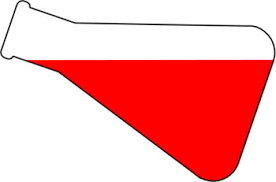freeskier93
Member
There are oil gallies, in the pinion part of the housing, that direct the oil, slung by the ring gear, to the outer pinion bearing.
I don't understand what lubes the pinion and how much fluid to put in doesn't it hurt the diff to tilt it up
As per the above descritions and videos, but if you want to get a' wee bit more' diff fluid in the fill hole after tilting the pinion you can have someone rotate the tires while you fill. That will allow the ring gear to pick up some of the fluid so you have room for a bit more.
Or...Leave the fill plug closed and fill through the vent tube.
so you put the same amount of oil in the tag says on the diff...
something that you can buy for $20 can ever last for 1.5 billion rotations.
Then think about how many rotations have completed by the individual rollers.
A raised pinion is going to hold less oil than non-raised one.
Are you sure?
Raising the pinion lifts that volume of fluid capacity up above the fluid level.
As it tilts up, more of the cover is being utilized.
I would think it would add more available volume than the front loses.
Not much of any of those parts are actually in the fluid.Nevermind that a ring and pinion change alters the displacement of the fluid. So does a change in differentials.

Not much of any of those parts are actually in the fluid.
However, aftermarket covers are probably larger than stock.
Guess I'll have to dig out my chemistry flasks and do some experimenting.
View attachment 368460
Wow! This video is great! I didn't know it existed, I need to embed it on our website somewhere. People are always worried about lubrication when they rotate their pinion. At first glance it makes sense to worry. We try to always assure people that the ring gear slings oil all over the place, "like a tire slinging mud" is what I usually say. But this video really shows how it is much more than a gentle splash, no way the oil won't get where it needs to go, unless of course there's not the right amount in there. The location of the fill plug changes, that's the thing that gets most people. That and just never checking or changing your diff fluid in the first place.
One other thing I'd like to add to the conversation is that people will sometimes say something like "I had my pinion pointed 15 degrees up and my pinion bearing went bad." The logic, which seems legit at on its surface is that there is cause: more angle and effect: bad bearing. But the reason their pinion bearing went bad before the other bearings in the diff is because of gearing. The fact that it happened X number of months after rotating the pinion is just coincidence. If you are running 4.10 gears your pinion is rotating 4.10 more times than your axles. This means that pinion bearing is spinning both 4.10 times as many times but also 4.10 times as fast. For some fun math (approximate numbers), lets say you have 150,000 miles on your Jeep with 4.10 gears. Over the life of that jeep your tires/axles/and side bearings in your differential have made 375,000,000 rotations. With 4.10 gears your pinion bearing will have made 1,537,500,000 rotations! And remember it's always spinning 4.10 as fast as the side bearings too! If a pinion bearing ever makes it to 150,000 miles it is a miracle of modern manufacturing and science that something that you can buy for $20 can ever last for 1.5 billion rotations.
Why would 150k miles for a pinion bearing be a "miracle of modern manufacturing and science"? Wonna guess how many miles are on my factory original transmission and berings? Hint, it's more than 150k. And a lot of those years with 4.88 gears, which also makes the transfer case, and transmission, and engine spin faster for a given speed. But wait! What about tire size? Most people are regearing after they put on larger tires, which for the same speed makes everything spin slower. So really, for majority of people, the lower gears are just putting you back near stock.
Sorry, not buying this. Pinion bearings aren't dying faster from spinning more, due to lower gearing.
Why would 150k miles for a pinion bearing be a "miracle of modern manufacturing and science"? Wonna guess how many miles are on my factory original transmission and berings? Hint, it's more than 150k. And a lot of those years with 4.88 gears, which also makes the transfer case, and transmission, and engine spin faster for a given speed. But wait! What about tire size? Most people are regearing after they put on larger tires, which for the same speed makes everything spin slower. So really, for majority of people, the lower gears are just putting you back near stock.
Sorry, not buying this. Pinion bearings aren't dying faster from spinning more, due to lower gearing.

